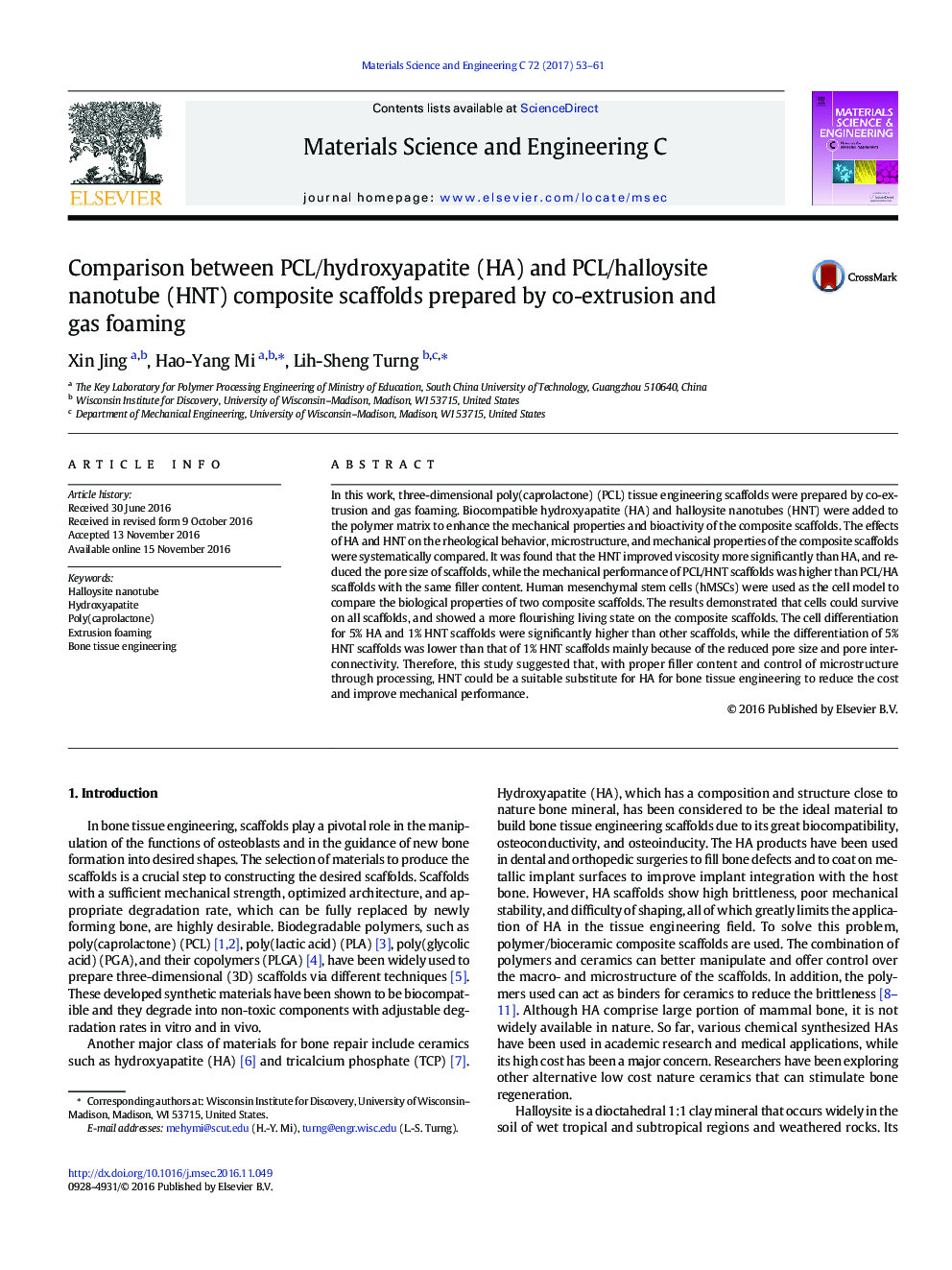| Article ID | Journal | Published Year | Pages | File Type |
|---|---|---|---|---|
| 5435179 | Materials Science and Engineering: C | 2017 | 9 Pages |
â¢PCL/HA and PCL/HNT scaffolds were prepared by co-extrusion and gas foaming.â¢HNT played more significant role in regulating the properties of PCL matrix.â¢hMSCs showed a flourishing living state on the composite scaffolds.â¢HNT at suitable content could be a substitute for HA in bone tissue engineering.
In this work, three-dimensional poly(caprolactone) (PCL) tissue engineering scaffolds were prepared by co-extrusion and gas foaming. Biocompatible hydroxyapatite (HA) and halloysite nanotubes (HNT) were added to the polymer matrix to enhance the mechanical properties and bioactivity of the composite scaffolds. The effects of HA and HNT on the rheological behavior, microstructure, and mechanical properties of the composite scaffolds were systematically compared. It was found that the HNT improved viscosity more significantly than HA, and reduced the pore size of scaffolds, while the mechanical performance of PCL/HNT scaffolds was higher than PCL/HA scaffolds with the same filler content. Human mesenchymal stem cells (hMSCs) were used as the cell model to compare the biological properties of two composite scaffolds. The results demonstrated that cells could survive on all scaffolds, and showed a more flourishing living state on the composite scaffolds. The cell differentiation for 5% HA and 1% HNT scaffolds were significantly higher than other scaffolds, while the differentiation of 5% HNT scaffolds was lower than that of 1% HNT scaffolds mainly because of the reduced pore size and pore interconnectivity. Therefore, this study suggested that, with proper filler content and control of microstructure through processing, HNT could be a suitable substitute for HA for bone tissue engineering to reduce the cost and improve mechanical performance.
